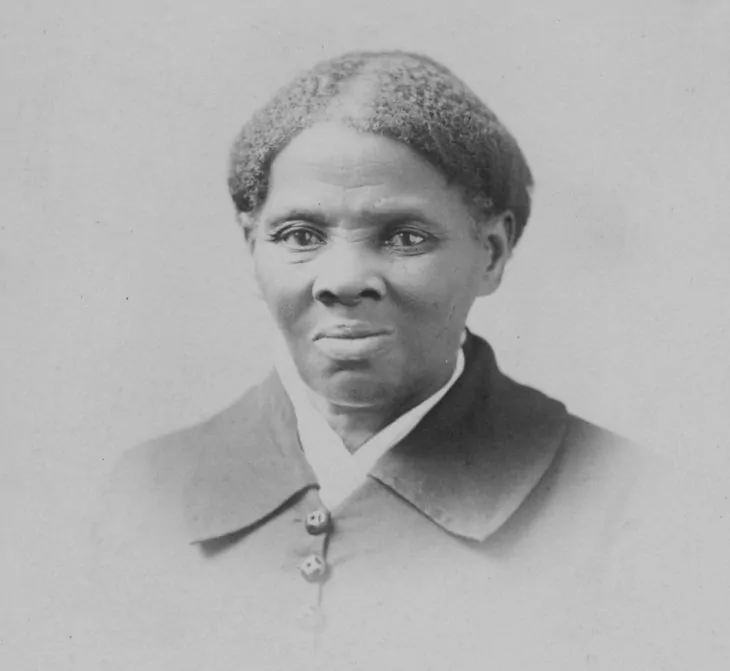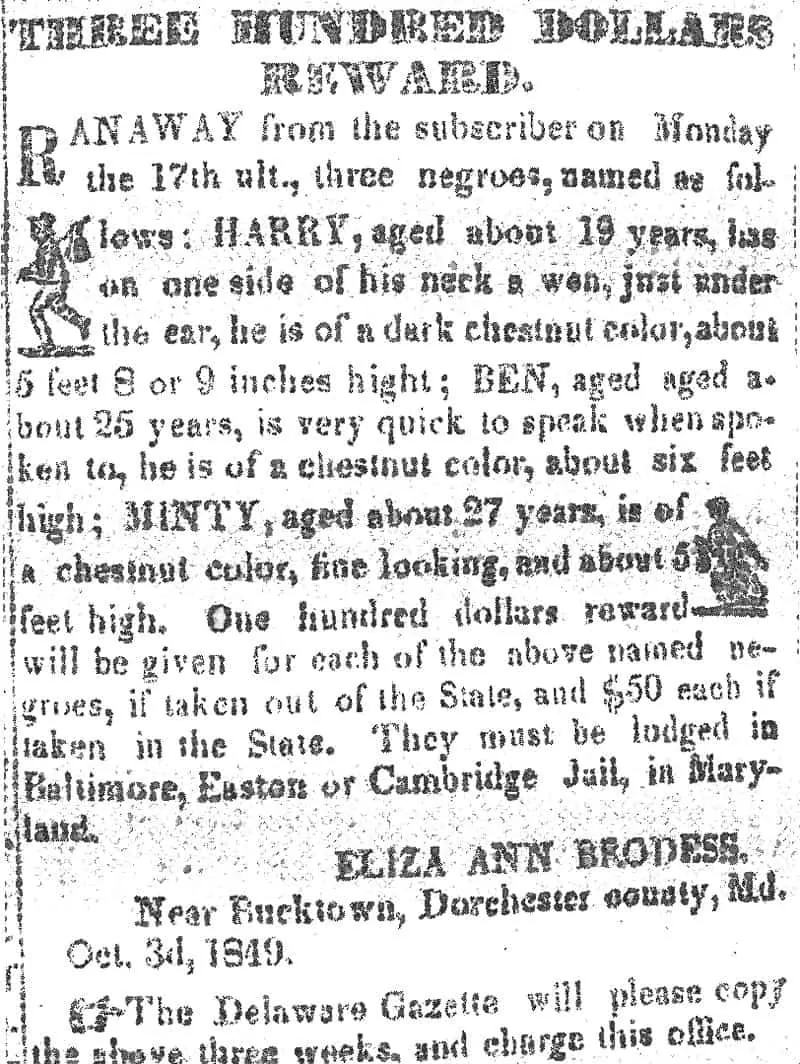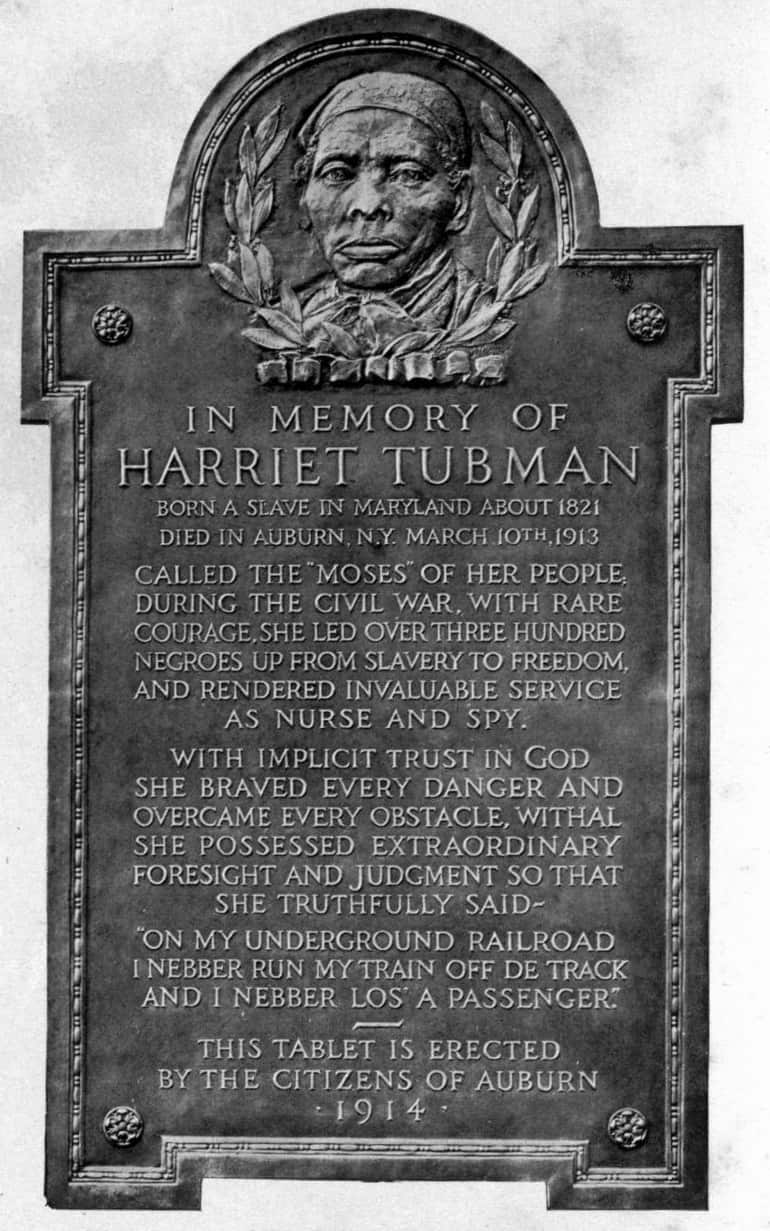
Although constitutions have made significant progress on the equal treatment of people, the marks of racism, discrimination, and intolerance stain the world to this day. Historically, the black community has faced the worst of these stigmas. Through centuries of bearing the brunt, great visionaries such as Harriet Tubman came rising to the cause. Leading the charge to free her people from slavery, Harriet Tubman left a legacy of fighting for black people’s liberty. To this day, she remains as one of many icons that the people and the movement hold onto. Learn more about the woman behind the Railroad with these Harriet Tubman facts.
- Harriet Tubman was an American abolitionist.
- Abolitionism is an anti-slavery movement in the United States.
- Araminta Ross is the real name of Harriet Tubman.
- Araminta Ross adopted the name “Harriet” from her mother, Harriet Greene Ross.
- Harriet’s surname came from her first husband, John Tubman.
- Although the exact day of her birthday was not recorded, Harriet Tubman was born in March on the year 1822.
- She was born in Dorchester County, Maryland, United States.
- Harriet Tubman is also a Civil War scout, civil rights activist, spy, suffragist, and nurse.
- “Minty” and “Moses” are her other codenames.
- Harriet Tubman is famous for helping and freeing slaves.
- Harriet helped more than 700 slaves to freedom which took 19 missions to complete.
- Gertie Tubman Davis (adopted daughter) was the only child of Harriet Tubman.
- Nelson Davis was the second husband of Harriet Tubman when they adopted Gertie Tubman Davis.
- Ben Ross was the father of Harriet Tubman.
- She did not go to college nor did have any other type of formal schooling.
- Harriet started working at the young age of 5.
- In 1849, Harriet managed to escape from Maryland to Philadelphia.
- After her escape in 1849, she later returned to Maryland to help her family escape as well.
- Harriet continued her escape mission and soon brought her relatives out of Maryland.
- After helping her relative, Harriet eventually reached out to the other slaves to help them escape as well.
Harriet Tubman Facts Infographics

Harriet Tubman used the 'Underground Railroad' to free slaves.
Over her lifetime, Harriet Tubman helped free around 300 slaves with a close network of antislavery activists. Through operating a hidden train system, Tubman never lost a slave through its secret routes and safe houses. Definitely one of many admirable Harriet Tubman facts.
The Underground Railroad was not literally underground.
Rather, the hidden railroad system was named for providing a mode of transportation from which slaves can seemingly vanish into the ground.

The Underground Railroad operated for over 100 years.
True to its namesake, the Underground Railroad didn’t have any existing headquarters, maps, newspaper articles, pamphlets, or published records. From the late 1700s until the mid-1800s, this network of secret routes, meeting points, transportation, and safe houses was maintained by abolitionists like Harriet Tubman.
The Underground Railroad used wagons as their mode of transportation.
Although they typically used wagons, abolitionists and slaves have also traveled the Underground Railroad on foot, with about three slaves per attempt. The routes were often chosen randomly to confuse authorities. From time to time, the slaves would also use a boat or train to escape.
Tubman used code names to help slaves escape.
For instance, “Canaan” served as a shortcut for the Canada Underground Railroad and “spiritual songs” referred to the directions. Since most of the slaves were illiterate, she ensured that Railroad’s routes would be easy to understand. How’s that for clever Harriet Tubman facts?
She used the stars and moss in the woods during her missions.
The stars and mosses became her guide in assisting the escapees. To be specific, the North Star (Polaris) served as her guiding light at night to help her navigate. She also followed the growth of moss, as her father once told her that these soft green plants grow northward.
Harriet Tubman faced many challenges in her missions.
Harriet Tubman went through a lot of challenges to liberate her people. For each mission, she had to bypass the police, slave catchers, bounty hunters, mobs, and dogs.
Once the escape mission begins on the Underground Railroad, she would psych up the escapees that if they were to back out from the escape, she would kill them. Definitely one of the Harriet Tubman facts that show how dedicated she was to the cause.
Harriet Tubman would administer a drug to keep babies quiet on the Underground Railroad.
Handling babies in normal circumstances is hard enough as it is, but having them on escape missions makes it crucial to keep them safe and keep them from crying. To solve this, Tubman would use a drug for babies to stop crying in the middle of the night, if necessary.
Harriet Tubman had narcolepsy.
During her teenage years as a slave, Tubman hit her head suffered a severe head injury. Tubman was struck by a piece of metal aimed at another slave. As a result, she had a sleeping disorder that gave her difficulty waking up.
Her head injury became an instrument for her mission.
After the incident, Tubman constantly experienced hallucinations and lucid dreams. She regarded her dreams as divine visions coming from God. Her religious convictions became her guide to reach out and help the slaves escape.
Harriet Tubman assisted 19 escape missions.
Tubman always suggested that slaves should escape on Saturday night, as slave owners commonly used Sundays as a day of rest. This would make it less likely that they would notice a slave is gone until Monday, providing the slave a two-day advantage. She also chose to move during winter, which had longer nights.
Harriet Tubman stands as a powerful symbol for black people.
Even long after her death, Harriet Tubman remains as one of the most powerful icons for Black people and how they opposed slavery before the civil war. Her bravery carries on as the black community battles discrimination to this day.

Tubman was 78 years old when she got a veteran’s compensation.
From 1862 to 1865, Harriet served as a spy to Federal troops, as well as working as a cook and a nurse. Harriet later applied for a veteran’s compensation. However, it took over 30 years before she reaped its benefits after the intervention of President Lincoln’s Secretary of State, William Seward.
The $12,000 bounty on Harriet Tubman was just a rumor.
Although there were rumors that Harriet Tubman had at least $12,000 (around $330,000 in today’s money) “dead or alive” bounty on her head, according to the reports, the only reward for Tubman’s capture was $100.

Donald Trump rejected the proposal for Harriet Tubman's image on a dollar.
During the presidential campaign of Donald Trump, he reacted after the announcement that Harriet Tubman will be on the twenty-dollar bill. The next day, Trump called Tubman “fantastic”, but disagreed with the idea of replacing Jackson with Tubman for “pure political correctness.” Definitely one of the Harriet Tubman facts that reminds us that what she fought for remains a battle to this day.
Harriet Tubman excelled in natural remedies.
Tubman’s familiarity with the local flora in Maryland helped her to find a remedy for Union troops suffering from dysentery. She also helped relieve symptoms of Cholera, Chicken Pox, and Yellow Fever.
Harriet Tubman had eight siblings.
In detail, Harriet Tubman had four brothers and four sisters. Her brothers were Moses Ross, Ben Ross, Henry Ross, and Robert Ross. Meanwhile, her sisters were Mariah Ritty Ross, Rachel Ross, Linah Ross, and Soph Ross.
Harriet Tubman was born on Anthony Thompson's farm.
Anthony Thompson was a doctor who owned the farm where Harriet Tubman was born. When his stepson Edward Brodess managed to have his own farm in Maryland, Harriet and her siblings also moved to Dorchester. From there, Edward Brodess became their new owner.
Edward Brodess tried to sell Harriet Tubman.
When Harriet Tubman fell ill in 1849, her value as a slave depreciated. As a result, Edward Brodess tried to sell her, albeit unsuccessfully. Harriet continued praying to God about her case, saddened in the idea of her master selling her and their slavery as a whole.
Harriet Tubman consistently prayed for her master.
Harriet Tubman continually prayed every night for her master to change his ways. However, his master was decisive in selling her and continued bringing people to look at her.
In March 1849, Tubman began to change her prayer, opting for God to kill her master if he won’t change his ways. A week later, her master died. Although her prayer was answered, this made Harriet remorseful for her prior sentiments.
Harriet Tubman's principle was "Liberty or death."
When Edward Brodess died, Tubman was certain to herself that they will be sold separately and her family will be broken apart. True enough, Edward Brodess’s widow, Eliza, started to find a buyer.
However, Tubman was determined to put her future on her hands and said that she would only choose liberty or death. From there, she started participating in abolitionist work.
Harriet Tubman and her siblings escaped on September 17, 1849.
Six months after Harriet’s master died, she and her brothers Henry and Ben had a chance to escape from slavery. During that time, the slaves were out and working with another household, and Eliza Brodess hadn’t noticed their absence.
Aside from that, Eliza didn’t even think that slaves were capable of escaping. It took two weeks for Eliza to realize that her slaves were already gone.
Harriet Tubman owned a revolver.
This weapon served as protection from the presence of slave catchers and their watchdogs. Tubman would also use the gun to strengthen the resolve of distressed slaves, so it wouldn’t compromise their escape.
Tubman had brain surgery without anesthesia.
Harriet Tubman had brain surgery in the year 1898, choosing not to receive anesthesia during the operation. Although it was unclear whether the operation improved her condition, she lived seventeen years more after the procedure.
The Harriet Tubman National Historical Park is located in Maryland.
Currently, only a few women have a national park dedicated to them. Out of 400 U.S. national parks, only 10 of have remnants of women’s history.
The Harriet Tubman National Historical Park was established in 2013.
The Harriet Tubman Underground Railroad National Historical Park is a 193-hectare national service park. Former U.S. President Barack Obama ordered to build the national park under the Antiquities Act on March 25th, 2013, to commemorate the accomplishments of Harriet Tubman.

Tubman spent her twilight years in Auburn.
Tubman spent her last few years in Auburn, New York, serving her family and other people in need. She also bought a house and a small piece of land for about $1,200 in Auburn.
Harriet Tubman died at the age of ninety-three.
After a lifetime of activism and service, Harriet Tubman died of pneumonia at the age of ninety-three on March 10th, 1913. Surrounded by friends and family on her last day, she was buried at Auburn’s Fort Hill Cemetery.

Harriet Tubman's story has been adapted into films.
The biography of Harriet Tubman has been made into different films over the years. These films include A Woman Called Moses in 1978, The Quest For Freedom in 1992, and Harriet in 2019. See her story for yourself and witness how she pioneered the movement against slavery here.
Was this page helpful?
Our commitment to delivering trustworthy and engaging content is at the heart of what we do. Each fact on our site is contributed by real users like you, bringing a wealth of diverse insights and information. To ensure the highest standards of accuracy and reliability, our dedicated editors meticulously review each submission. This process guarantees that the facts we share are not only fascinating but also credible. Trust in our commitment to quality and authenticity as you explore and learn with us.


